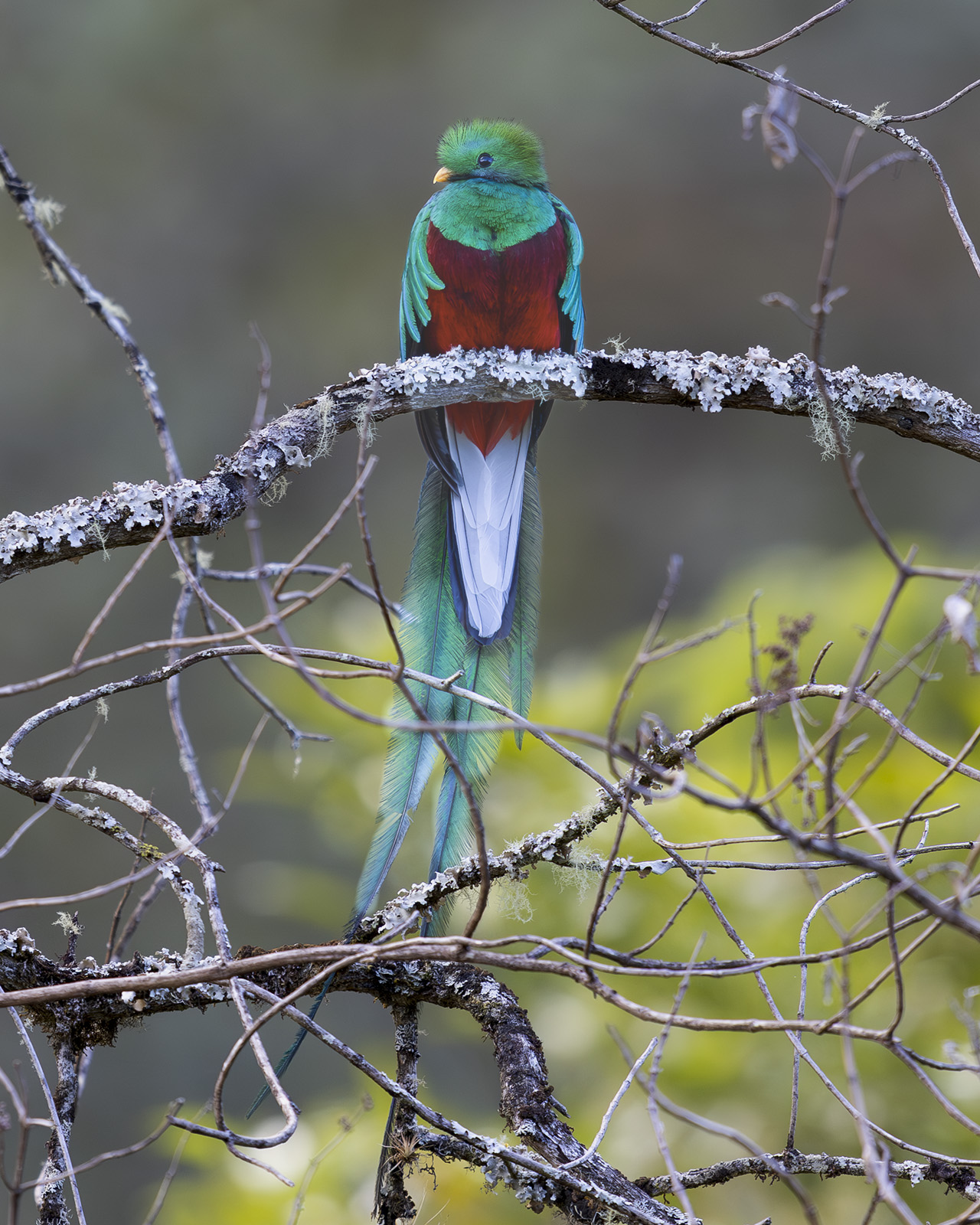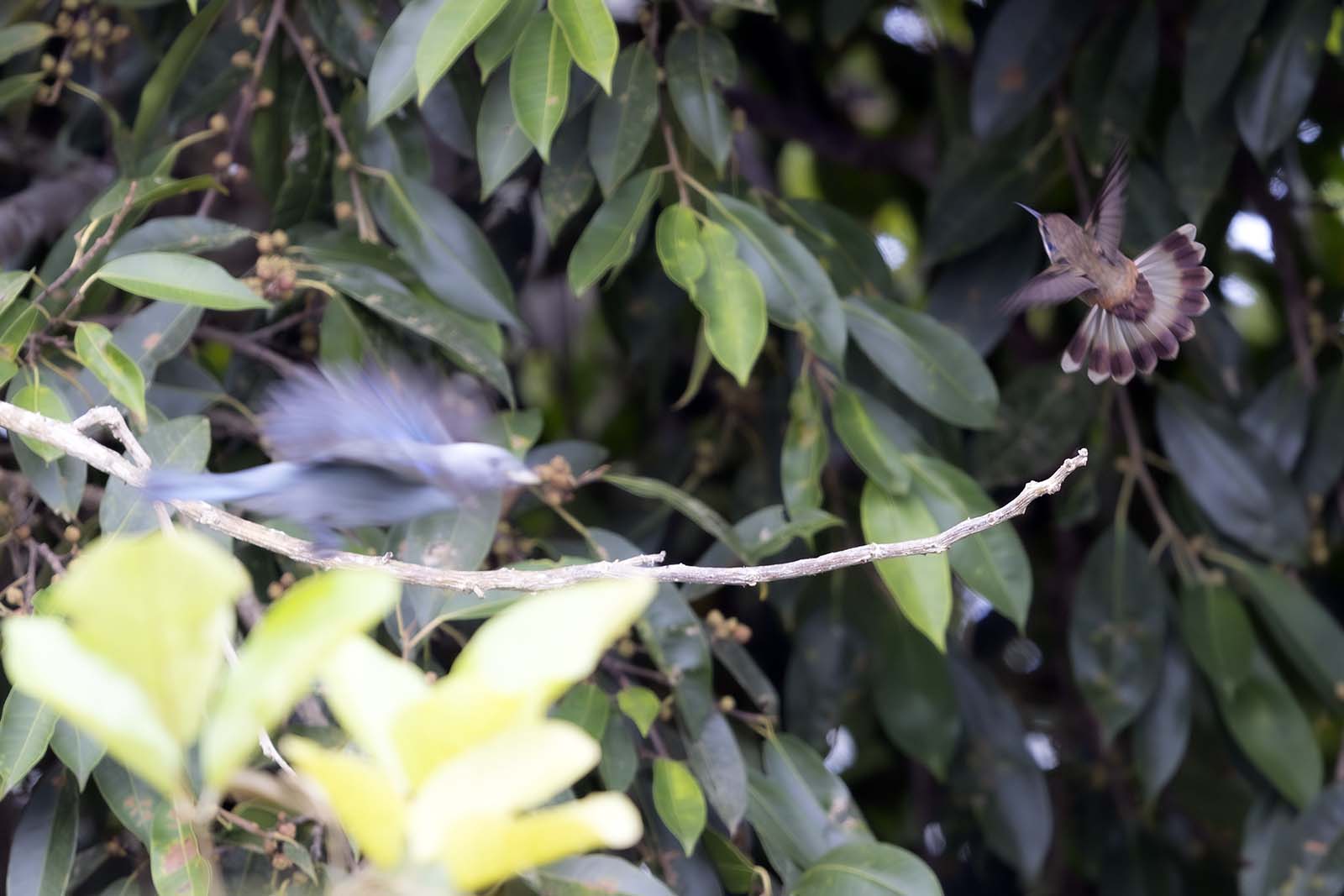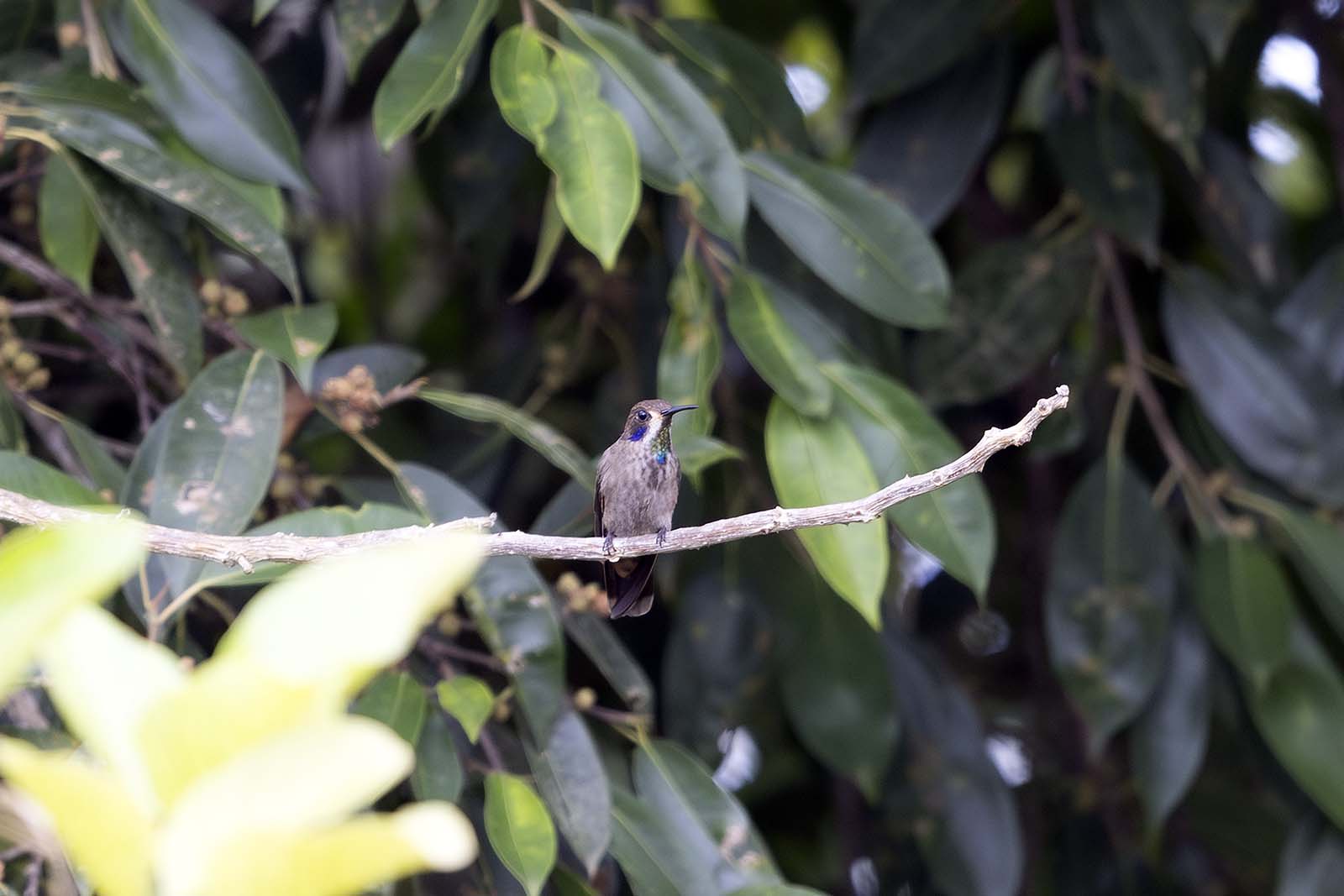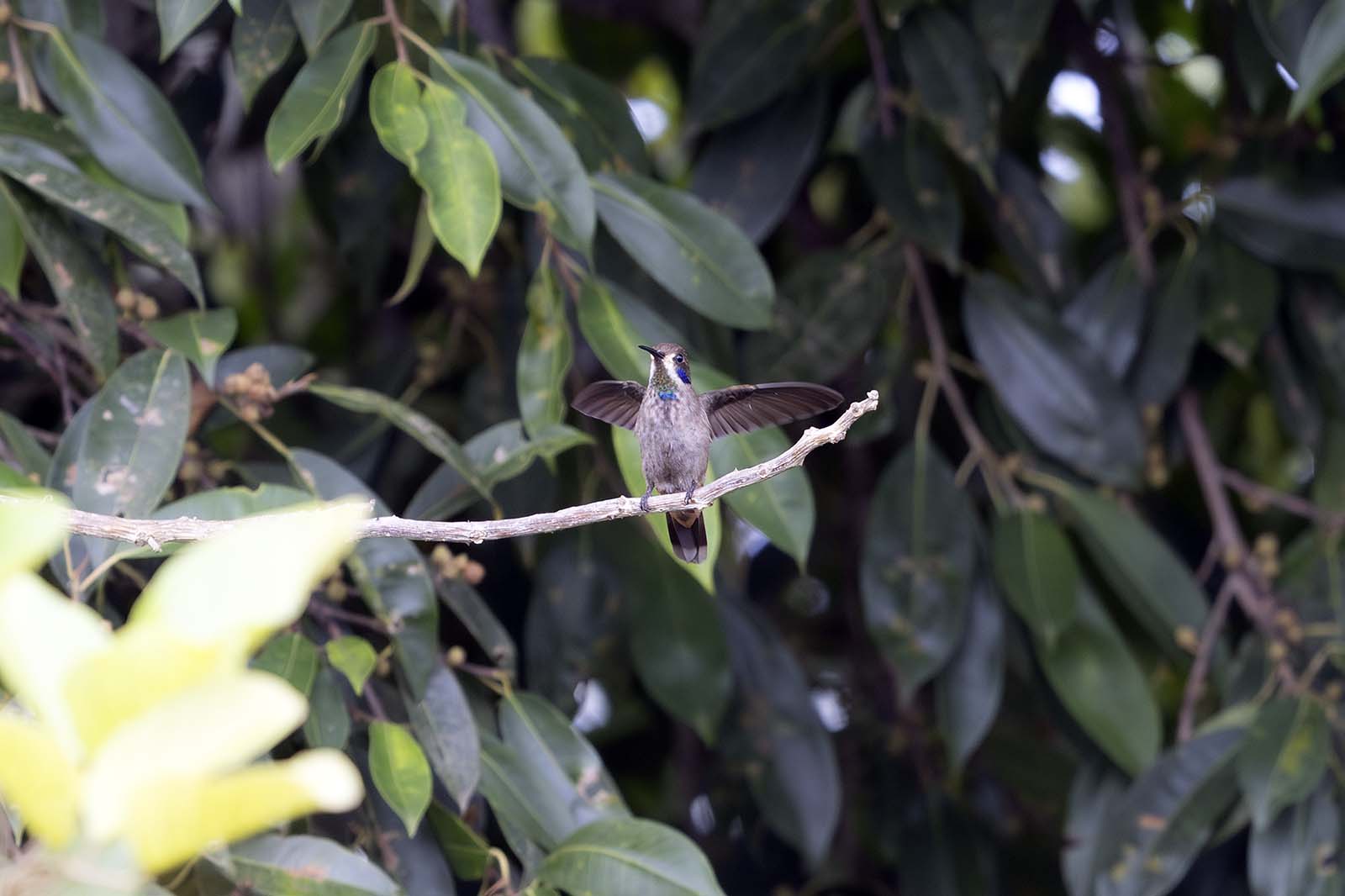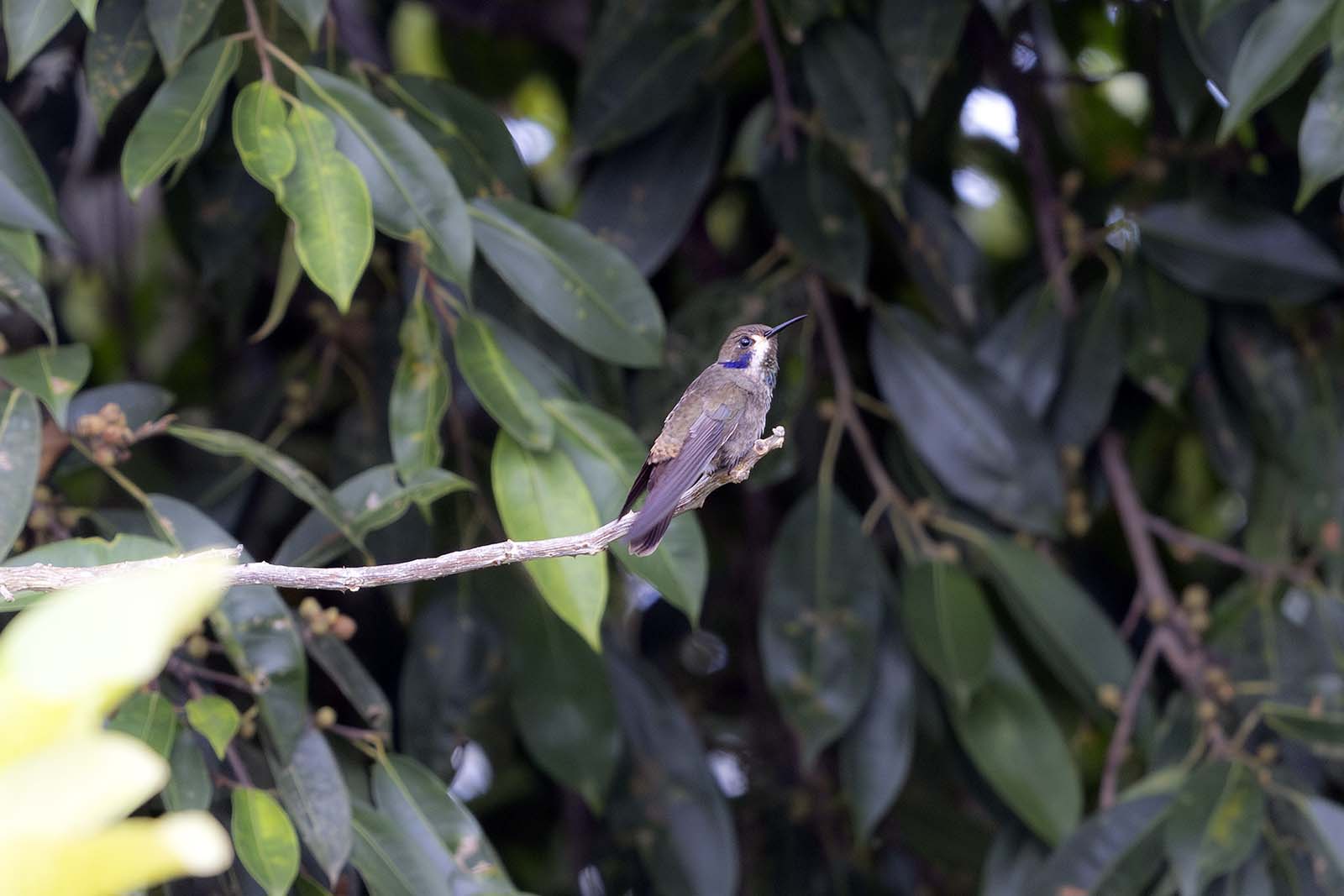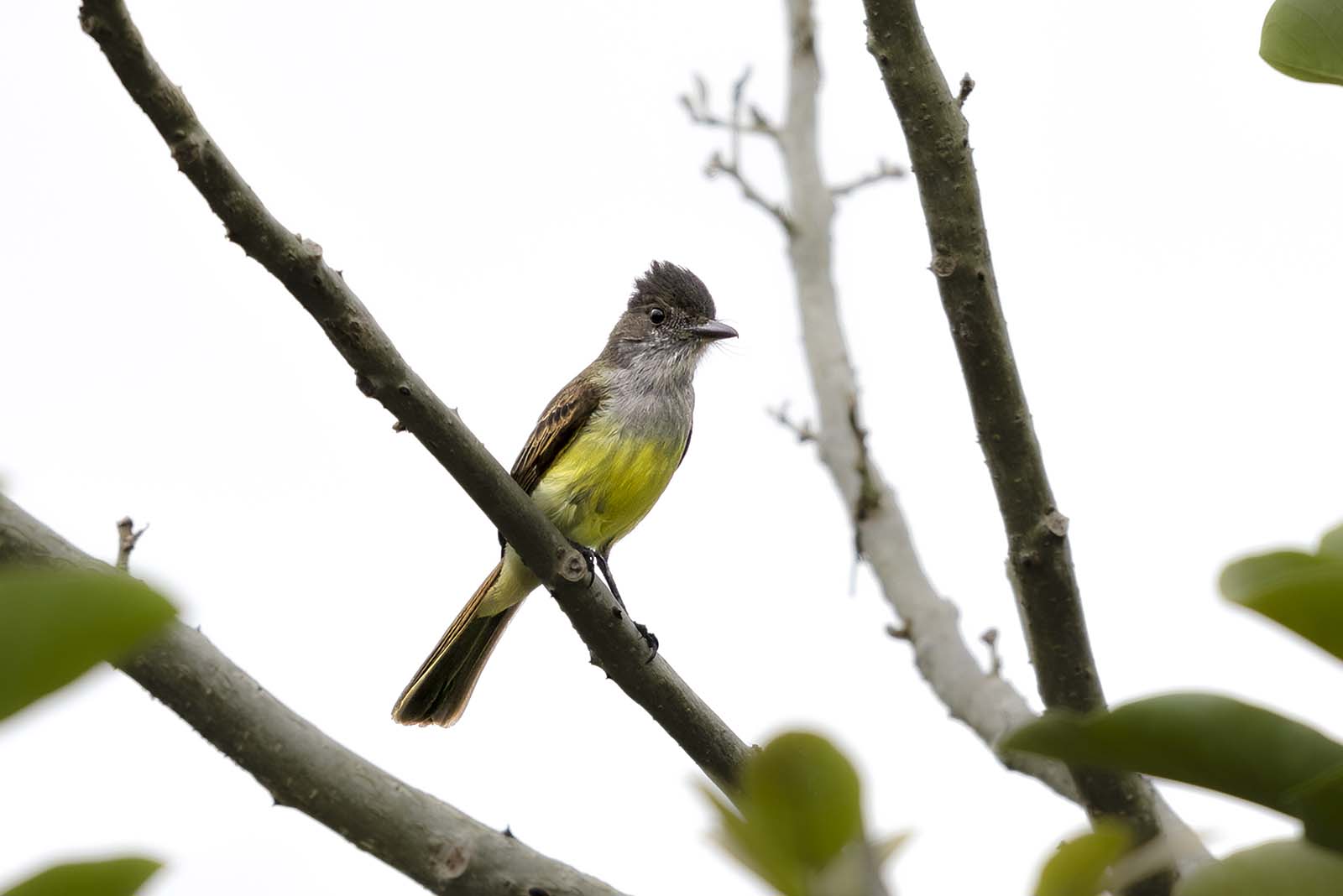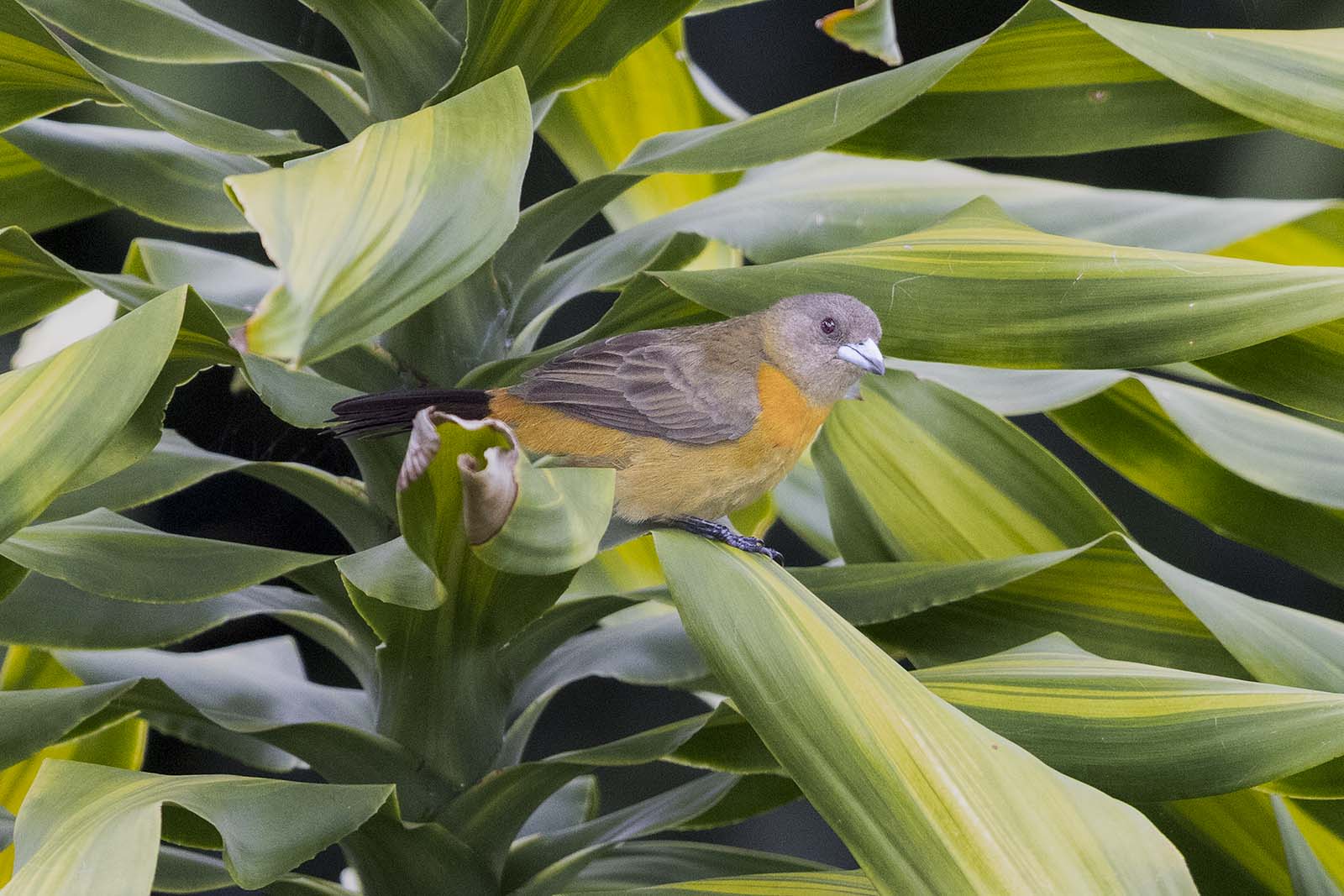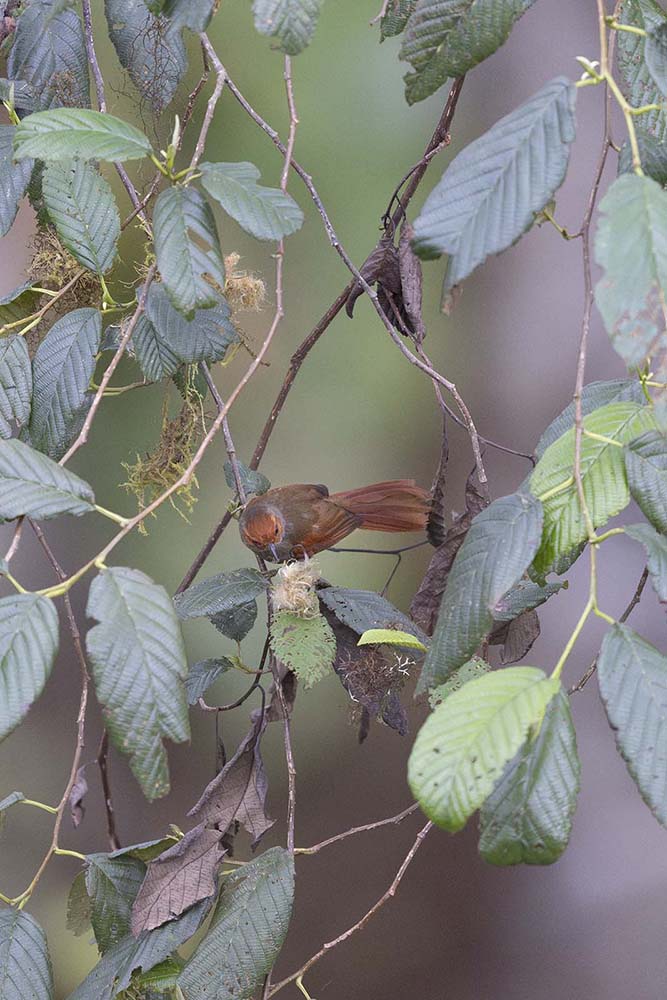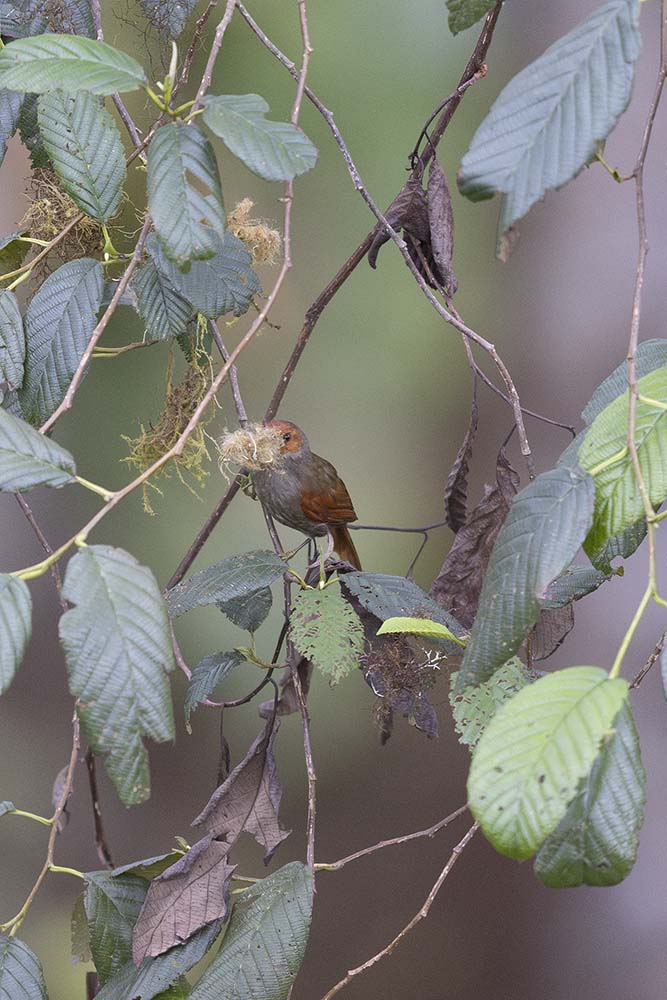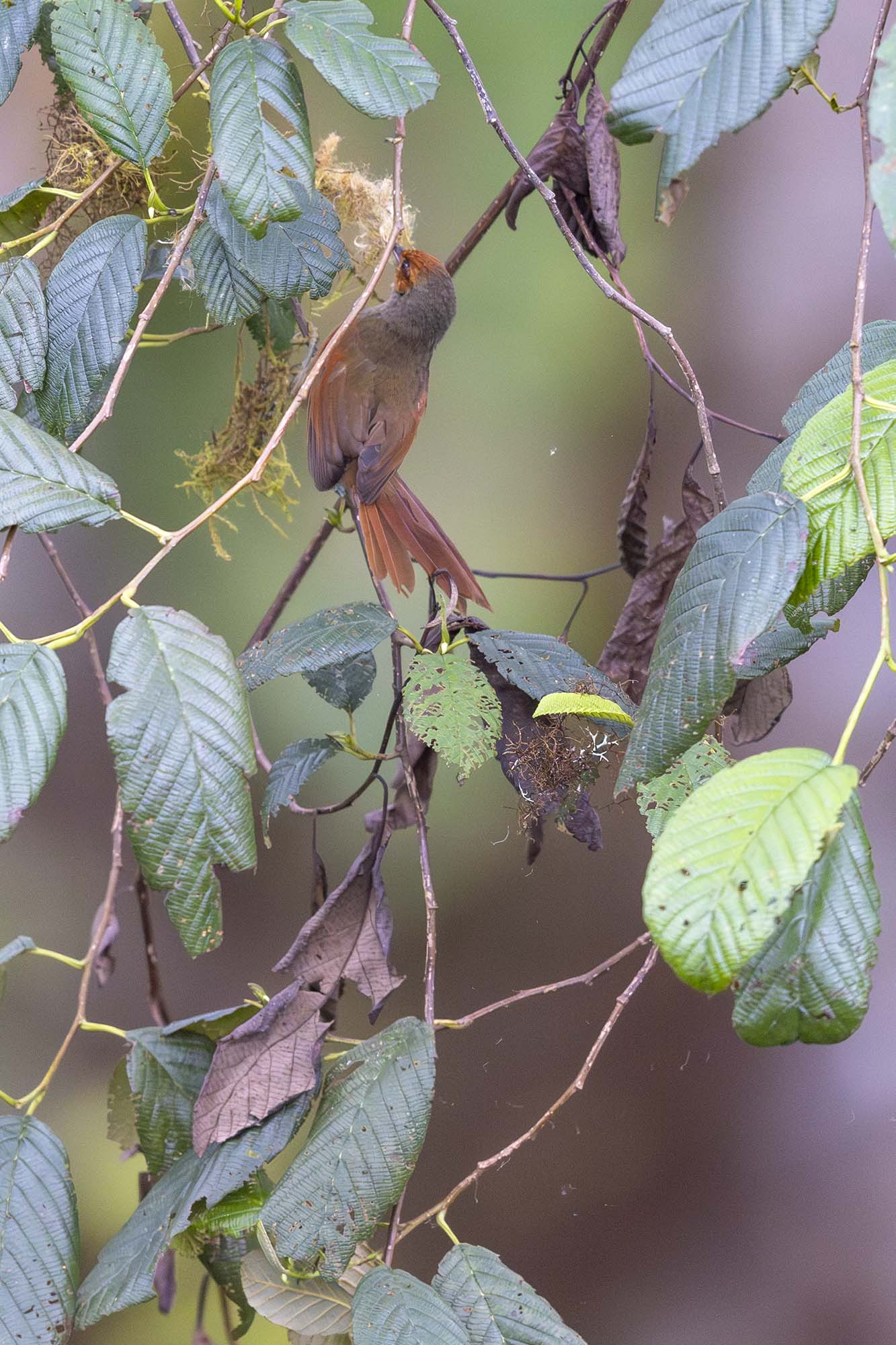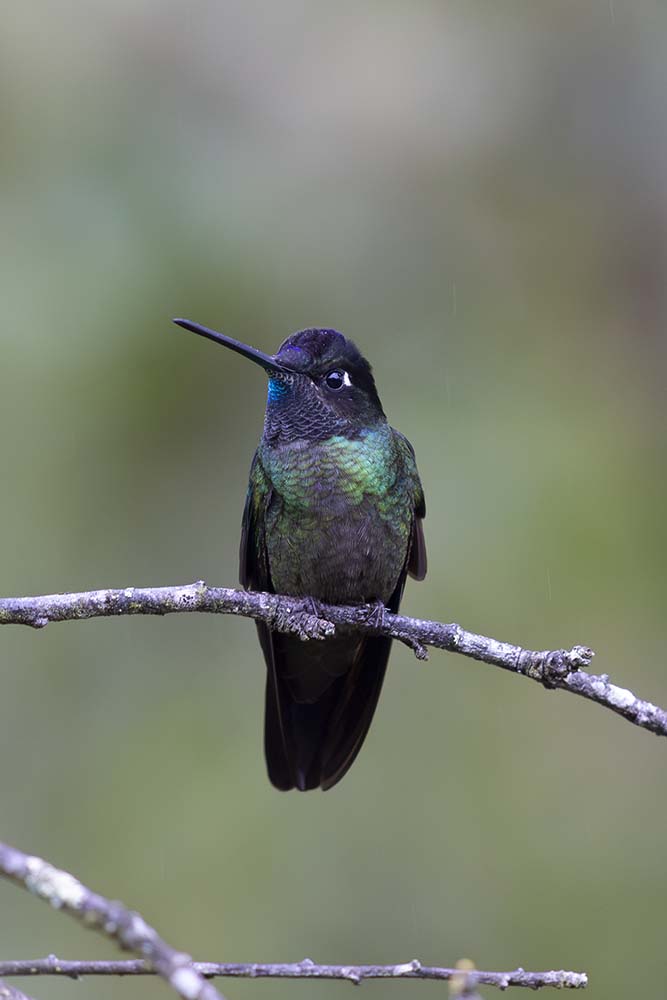Introduction
Ask a Costa Rican, a 'Tico' as they call themselves, about the most beautiful bird in their land, and you'll receive a variety of answers. For many, the beauty lies in the Euphonias and Tanagers, plumes of bright, saturated colors flitting through the forest greens. For some, the beauty lies in the bold, contrasting colors of the Fiery-Billed Aracari or the Scarlet Macaw. And then there are the myriad Hummingbirds, those miniature flying jewels, further adorned with crests, tufts and sculpted tails.
Yet, amongst this tapestry of feathered brilliance, many a Tico will point to the Resplendent Quetzal. This is a bird deserving of its name, for it embodies the very essence of avian majesty.
The allure of the Resplendent Quetzal has, unsurprisingly, fueled a burgeoning ecotourism industry in Costa Rica. Nestled within verdant valleys, where the Rio Savegre winds its way through dense groves of moss-draped oaks, lodges cater to those seeking a glimpse of this avian legend.
It's into this realm, on a day slick with April rain, that we descend, hoping to catch a glimpse of this famed bird.
The Journey
We woke up at 4am at our abode in the hills above Dominical and cleaned up the place before our departure. My brother, ever the pragmatist, sliced papayas as a snack for the road. At that early hour, I took 400 mg of Advil, a futile attempt to quell the persistent pain in my right neck and shoulder, but I knew there was no other option. My brother took the wheel and our journey starts with the quiet closing of a door and the crunch of gravel beneath tires.
As we slowly descended the hills, our headlights illuminated small flocks of nightbirds (most likely
Common
Pauraque's) roosting in the middle
of the road, sending the startled birds scattering into the bush. There was barely any activity on the road
and as per instructions from our guide, Walter, we arrived an hour later, east on the highway 243
and parked by the side of the road
next to a small organic grocery store that also doubled as a gift shop. While waiting for
Walter, I took a short walk along the road with my camera in hand, while my brother explored the gift shop.
Young school children in their uniforms, accompanied by adults, looked at me with curious eyes. 'Buenos Dias'
I greeted them and their chaperones with a wide smile, and was met with a chorus of friendly smiles in return.
Walter arrived on a light motorcycle, hoisting a large backpack with rain boots strapped to it with bungee cords.
As I made space for his
gear in the trunk I asked,
"Why the rain boots, Walter?
Are we expecting to encounter particularly wet or muddy conditions for our birding?"
"It will be wet in Savegre, Señor, I always like to come prepared", he replied with a knowing grin.
The weather forecast for the Savegre valley had called for mostly cloudy skies with intermittent heavy downpours.
We had come equipped with rain gear, but if birding was going to involve wading or mud-skipping ! -
then it was certainly taking
things to the next level.
Our ascent through the valley
was slow, our progress hampered by a lumbering cattle truck, not a sight that typically I see stateside.
Impatient drivers, including a daring
motorcyclist, tried to slip past, but the road offered little room for maneuvering. Instead of
staring at the back of this truck and its cattle cargo for long minutes, we chose to take impromptu pullover
stops and enjoy the scenery,
though it was mostly distant cloud-wreathed peaks playing hide-and-seek.
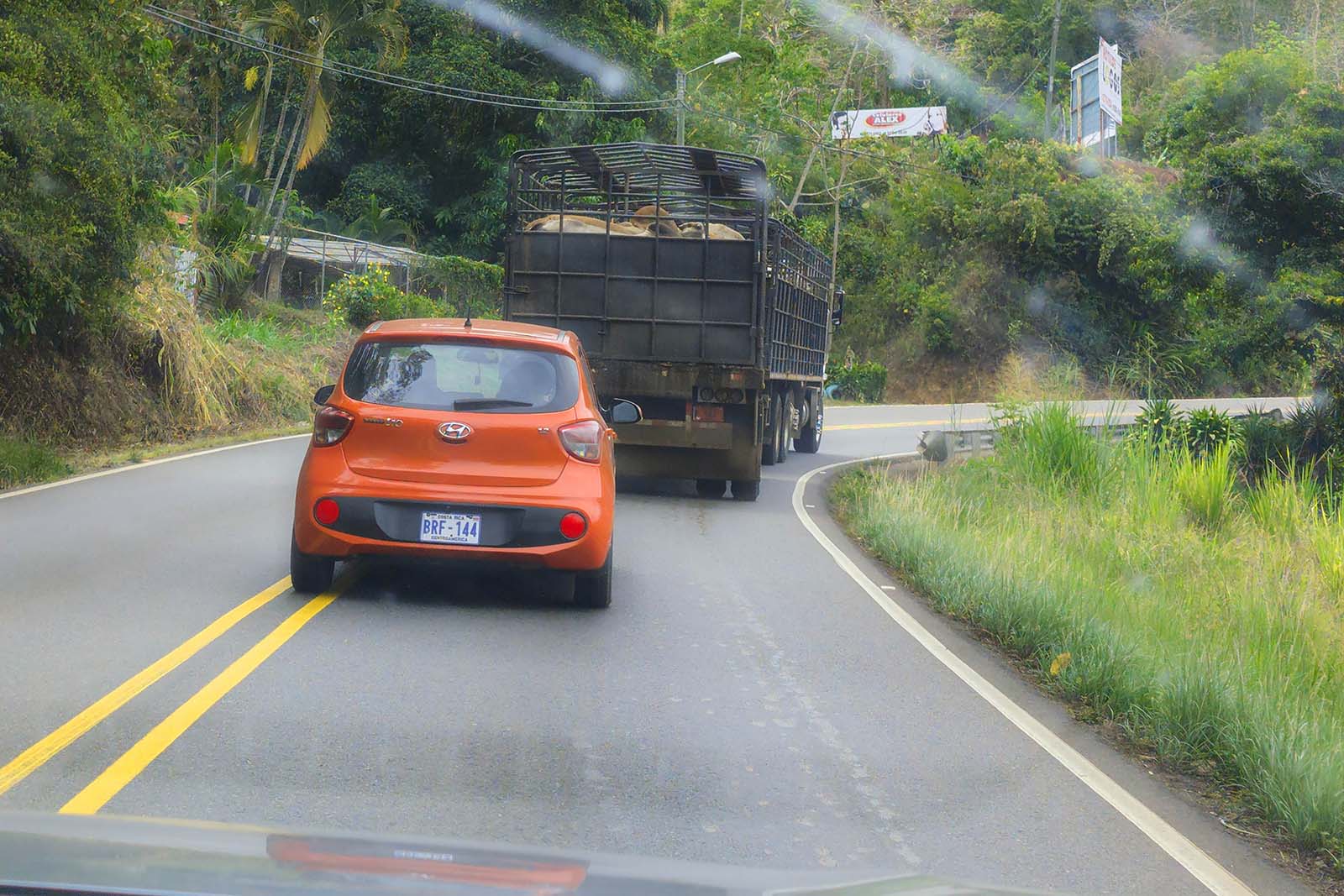
When we arrived at
Mirador Valle del Generale
(ebird location link),
a popular birding spot, and our choice for a longer break, it was closed.
I asked Walter to speak to the proprietor and ask if we could get access to the viewpoint,
a patio that overlooks the valley and invites hummingbirds to its feeders,
but despite his beseeching she was firm. Nevertheless, we stretched our legs at this stop
and bundled ourselves against
the wind and cool, moist air.
Walter and I birded from
the parking lot and picked up a
Dusky-capped Flycatcher,
Scarlet-rumped Tanager and a
Brown Violetear
(photos)
sallying for insects in the distance. Flocks of
Blue-and-white Swallows swept through the mist,
flashing past us at eye level and disappearing into the gray.
Our next unplanned stop is now
at a roadside café called Restaurant 2020,
(ebird location link)
that turned out to be a hidden gem!
A nondescript verandah at the back of this café opens up to a mature deciduous forest of oaks and
laurel trees. Mosses and bromeliads punctuated their trunks as every branch of every tree wriggled its way
to get a bit more of that sunlight.
As we warmed ourselves with coffee and snacks, bird species popped left and right,
including a cute Collared Redstart
(photo),
a Flame-throated Warbler
(photo),
and a diligent
Red-Faced Spinetail emabarking on its nest building effort.
It would gather small bits of pale fibers and bits of moss, place its catch, eyeing the construction before departing for
more nesting material.
(I took a
sequence of photos of this action and a video of the nest construction.
It repeated this action multiple times and kept making adjustments to the clumps
adding a little here, removing a bit there. It was as if the bird was establishing the boundaries of its nest before adding more
construction material.
Fascinating and what pure luck though! I could have easily spent hours watching and photographing this bird
build its nest and decipher its nest building actions, but we have to continue our journey,
with over an hour still left on the road.
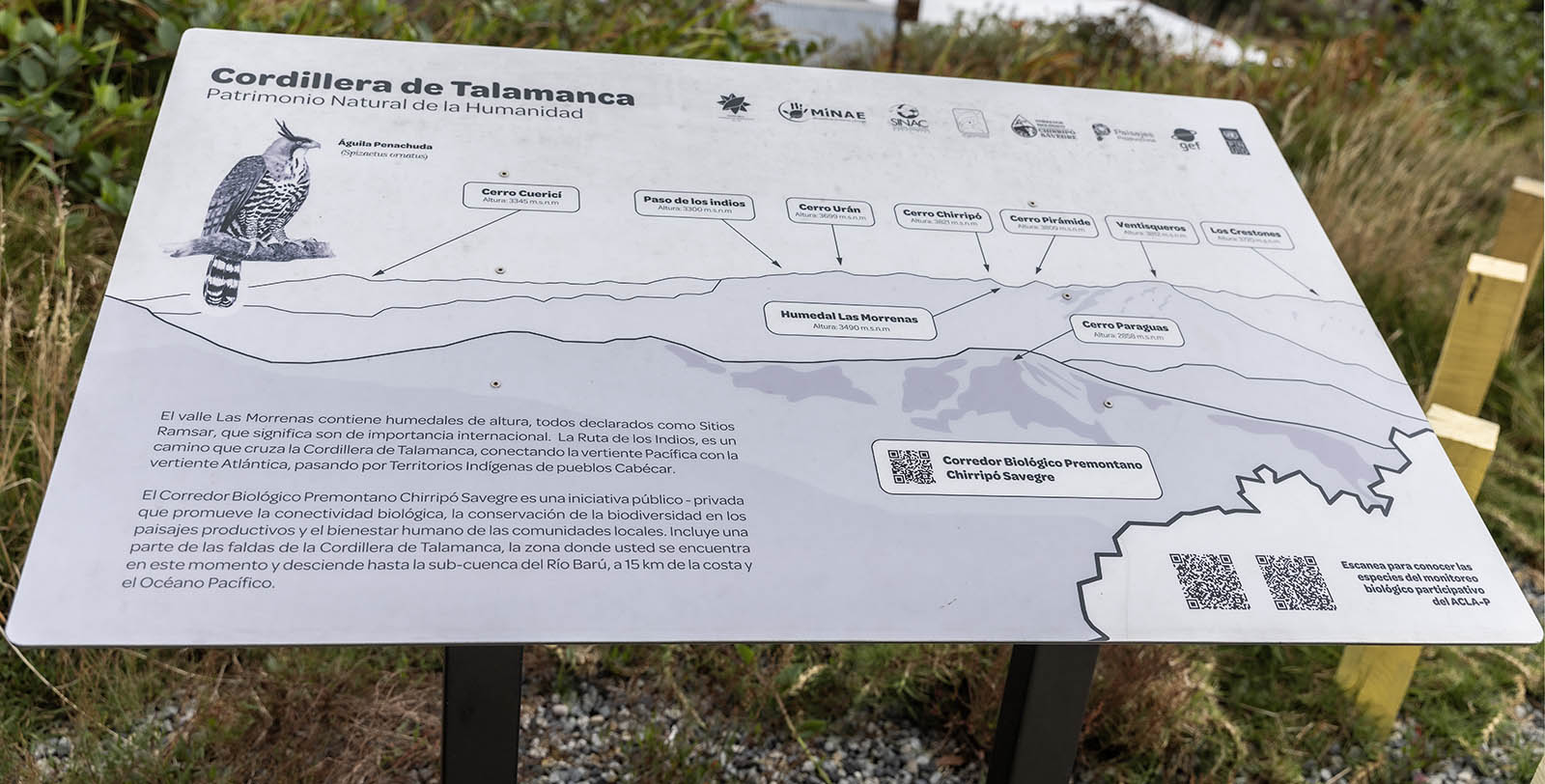
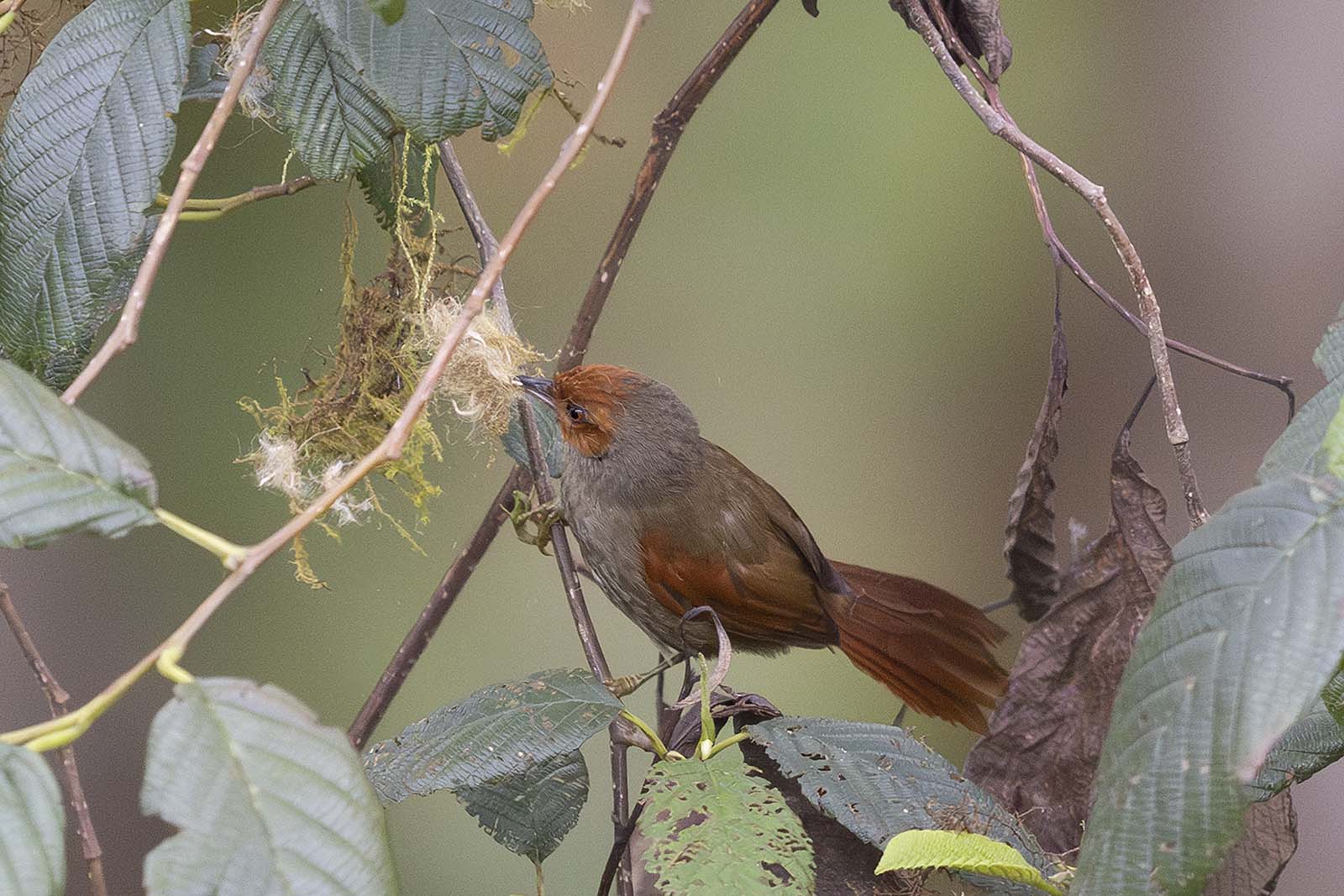
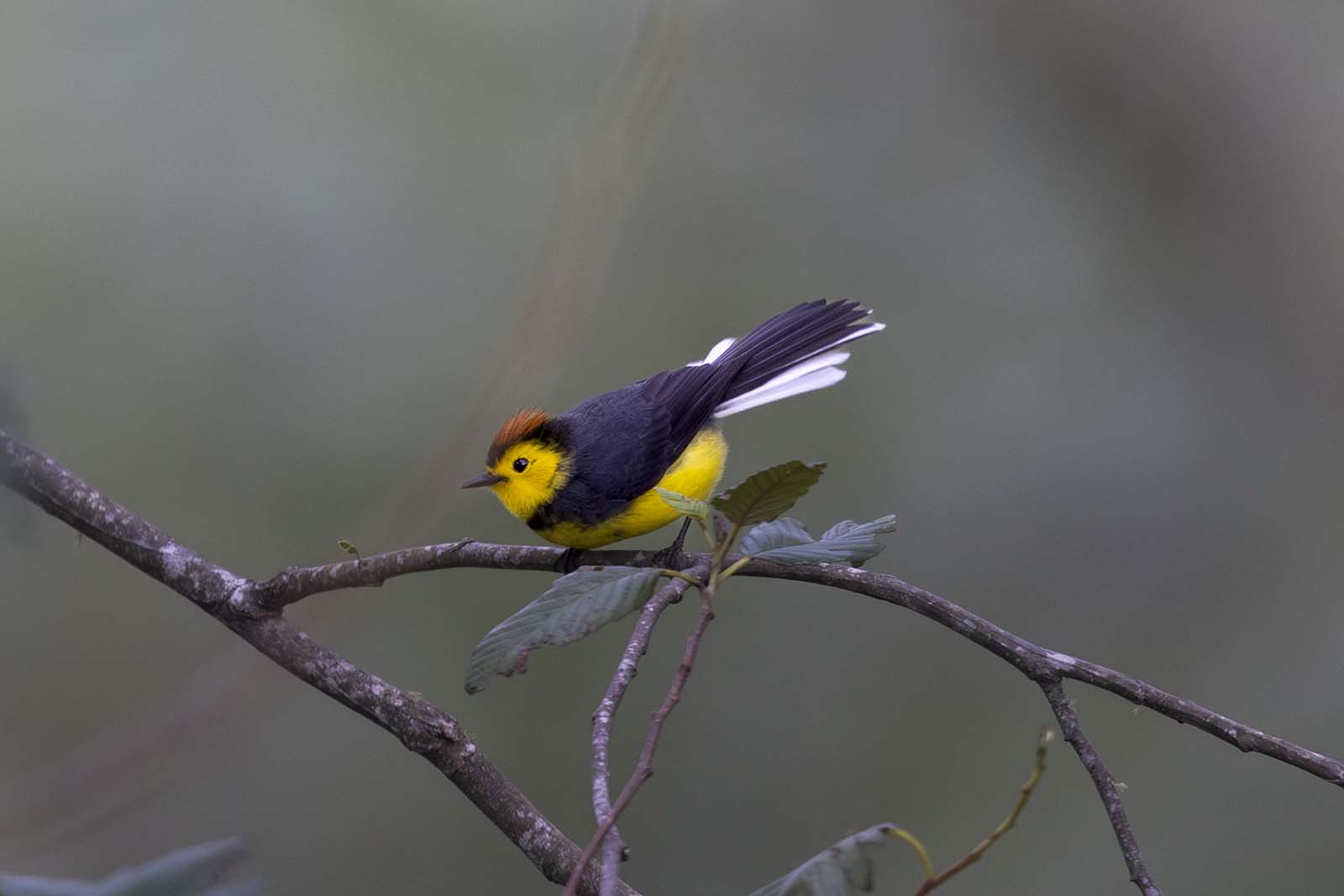
The climb continued along the ribbons of Highway 2, dense foggy conditions now present,
however the road itself was in very good condition
and the driving was comfortable.
Just after passing the highest point on this highway, we leave the highway and descend
into the Savegre Valley,
a rapid descent on narrow, winding roads. Our final planned stop for the day,
Miriam's Quetzal, another popular cafe and birding spot
(ebird location link)
was another unexpected closure. In the light rain we birded from the eaves under the restaurant
roof, spotting a Volcano hummingbird and several larger Talamanca hummingbirds. A Large-footed Finch
and couple of Rufous-collared Sparrows pecked at the grass. A Flame-colored Tanager couple perched briefly in
the bare brances of a tree,
I think in expectation of a handout offered by the cafe, but there was none.
There was still light in the sky but the
wind picked up and at the same time rain started to come in heavier, sometimes lashing against the protective sleeve
of my camera gear. My brother tells me its time to go. This prompted me to pack up and we head for our lodge as our final stop for the day.
Checking in at our cute bungalow, we unloaded our gear and lit up the mini-fireplaces that were present in
each room of this lodge. I made us a pot of coffee and took out our snack bags. Relaxing on the living
room couch and reminiscing on the day's travel, we are treated to a
a sprawling view of the verdant hills seen through a massive window in the living room.
Throughout the
rest of the day the clouds rolled in and out of this valley, on occasion bringing torrential rain,
a constant reminder that we are in a ‘cloud forest’.
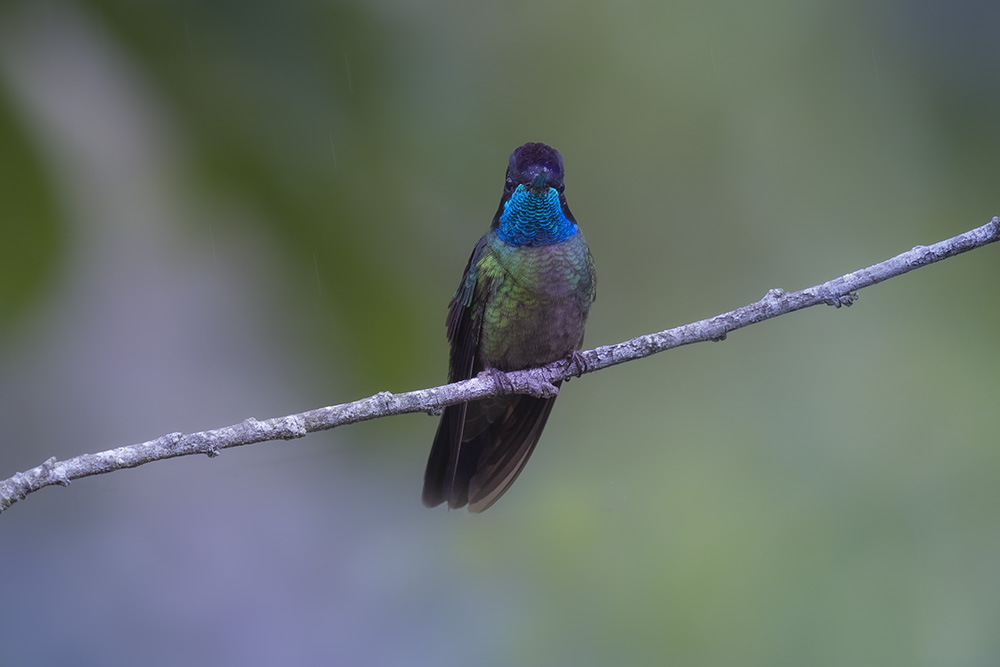
The First Sighting
Today is the day to see the quetzal, the bird we made this journey for, the bird that I kept talking to my brother to entice him to make this trip with me to Costa Rica.
In the predawn hours I down another 400mg of Advil as my neck screams in protest of me hauling my large camera and tripod. We nibble on some snacks and pack the essentials while eyeing the view from the living room. Rolling clouds lumber over the verdant hills and the place itself looks like a dreamscape.
Light has just emerged in the sky and bird calls have started to punctuate the stillness but it is still too dark to see anything. As we wait outside for Walter to join us I see a couple emerge from the lobby. I strike a conversation with them. They are Dutch and are also here to see the Quetzal. They have been traveling on and off for a year and recently wrapped up a visit to California and Wyoming. Their favorite place during their travel – the Grand Teton National Park, for its incredible scenery and they got to see a black bear fairly close! As we are talking in hushed voices, a large van rolls by, with a caricature of a Quetzal emblazoned on its side and several passengers inside. It's Quetzal watching hour, let's go !
The road from our lodge descends further down into the valley. As we pass a small church that opens up to a clearing, we see several vans and cars parked by the side of the road. We park our car behind them, gather our gear and start walking towards the congregation of fifty odd Quetzal watchers. Guides in their forest-green uniforms prowl the periphery of the property fence, their scopes at the ready.
We join this loose gathering and I instruct Walter to get the beta. A tall man, carrying binoculars cries out that he sees the Quetzal and there is a murmuration in his direction. I have set up my tripod and camera and I am worried about being a trip hazard for the Quetzal watchers. So I decide to stand back and not join the crowd. The Quetzal call does not materialize.
Long minutes crawl by. Ten minutes, then twenty. I continue to scan the distant trees but
I can't see a single bird. I also realize that a Quetzal, if present, would be well camoflagued in
the dense foliage of various hues of green.
A pessimistic dread starts to emerge - could this be it? No Quetzal today?.
The anticipation, so carefully nurtured, threatens to crumble. But I tell myself –
we have two more days in this valley.
Surely, the elusive Resplendent Quetzal will reveal itself in one of our endeavors and we will devote
our time and energy to it. Hope rekindles, and I go back to scanning the forest.
Excitment starts to build up as the guides coalesce in one spot and start gesticulating towards a
fallen tree in the distance. I try to pick up the chatter and the direction in which the guides are looking, while
I scan for Walter. He is chatting with other birders. "Walter!", I cry out,
"let me know if you see the bird". 'Si Señor', he flashes a toothy grin.
We don't notice a red pickup truck until it gets close to the birdwatchers, It comes to a halt, horn blaring. The crowd starts to disperse. There is sufficient room for the truck to pass yet it continues to honk. The crowd moves a bit more. There is a leather faced man and his female companion and he does not look pleased. As he finally passes us, he guns the engine, showering us with gravel and a huge cloud of dust. Some tourists are shocked. Words are spoken. This person lives here, they say and he views the Quetzal eco-tourism as a nuisance.
The crowd continues to sway back and forth. The tall man cries out that this time he has a clear look at the Quetzal. We move quickly to his position. My brother sees it before I do and I ask him to point me to the bird.
And there I have it. At a distance of about hundred and fifty feet, a male is resting on a thin branch, its long tail coverts swinging slowly with the gentle breeze. There is a scramble for vantage points as the bird can only be seen clearly in a narrow field of view. Cameras click furiously. Then a collective sigh of relief. My brother and I take selfies next to my camera screen that shows the photo of the Quetzal.
A few women approach us and ask if they can take a photo of the Quetzal displayed on the LCD screen of my camera. More selfies and more photos are taken. More Quetzal watchers arrive to glimpse the bird from my screen – now functioning as a live view scope or mini jumbotron. The Quetzal obliges by perching on its branch, unperturbed for a good ten minutes. It is quite possibly observing us observing him.
I soak in a few more minutes looking at the bird and registering the moment - the cool, misty air, the faint rustling of leaves, the distant calls of other birds, the excitement of voices in languages I do not understand. It is still early morning and Walter proposes that we continue down the valley and look for other birds. More pressingly, I wonder how much more Advil can I safely take before the day is through.
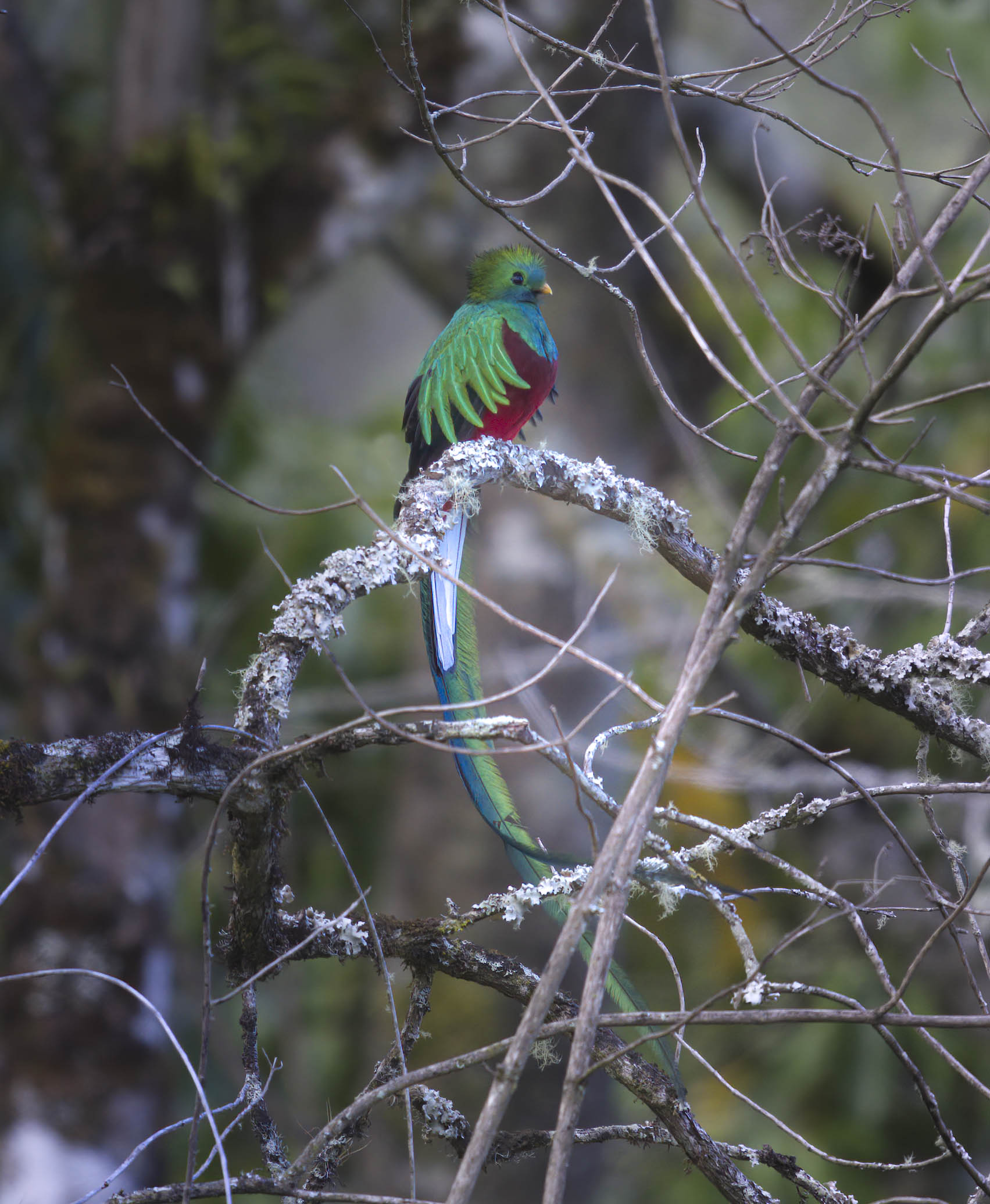
Meditations
To travel vast distances for a momentary glimpse of natural beauty is fundamentally an act of reverence.
The encounter of seeing something this rare and beautiful is a profound and complex one that exists at the intersection of imagination, desire and the human experience of traveling to far off lands to simply be in the same shared space as a bird and fellow birders.
This bird, is what we birders would call a ‘lifer’ – a bird that is in your “life list of birds to see” and you have finally seen it, photographed it, spent time admiring it. I have struggled at times with this checklist-oriented view of birding. My kids will tell me that ‘birding is Pokémon for adults’, and I admit that there are grains of truth in that statement. However, I also feel that travel to far off lands to see birds is not a form of accounting but a cartography of human curiosity.
The Resplendent Quetzal, in this context, becomes more than a bird. In traveling to this place, we are participating and paying homage to the the cultural and spiritual significance imparted to this bird through millenia. It is also about entering into a relationship of mutual respect with the natural world, a sense that we cannot possess the natural world, only witness it.
These thoughts are nothing new. I have been peeling back these layers ever since I started spending more time outdoors birding and photographing birds. And now, an international birding trip that would have seemed like an indulgence, impossible to justify and downright whimsical some years ago, now feels like a necessary pilgrimage. Each bird is an experience, each landscape a chapter in understanding not just biodiversity, but my own capacity for wonder.
I conclude by quoting a paragraph by the ornithologist Alexander Skutch from his book Birds of Tropical America. In 1938 he spent several months in the Costa Rican mountains in the search of this bird and was rewarded with a close observation of a pair in nesting season, documenting their daily life with vivid detail.
"The superlative beauty of the Quetzal grew upon me during those long months of close association with it and amply repaid every sacrifice I had to make to cultivate it acquantaince. The drenchings, the wet feet, the chills, and the rheumatism that I suffered while studying its home life left no lasting ill effects, and it is not unpleasant to recall that I could bear these discomforts. But the recollection of intimate contacts with so magnificient a creature will remain bright and vivifying as long as memory itself endures."
